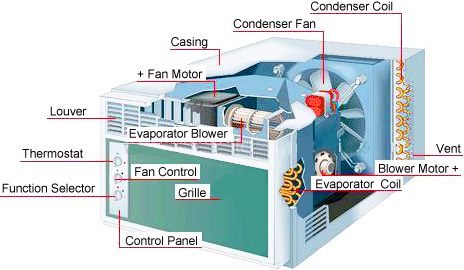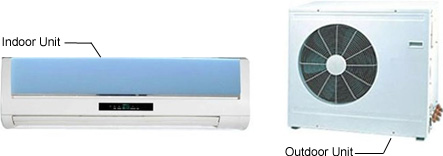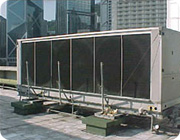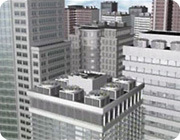BUILDING
Conventional Air-conditioning System
Air conditioning systems control the temperature, humidity, air movement and air cleanliness inside a building, in order to provide occupants a comfortable environment with good indoor air quality.
In general, air conditioning system can be categorized into room coolers and centralized systems.
Room coolers, such as window and split-type air-conditioners are most commonly adopted in residential buildings. The whole refrigerant cycle is completed within the room cooler machine. The figure below shows the interior structure of a window-type room cooler.

The split air conditioner comprises of two parts: the outdoor unit and the indoor unit. The outdoor unit, placed outside the room, houses components like the compressor, condenser and expansion valve. The indoor unit comprises the evaporator or cooling coil and the cooling fan. The outdoor unit connects with the indoor unit by two refrigerant tubes. The cooling capacity of split-type air-conditioner is usually larger than that of window-type.

Centralized air conditioning systems are used for cooling large space or entire building. Generally the COP (Coefficient of Performance) of centralized air conditioning system is higher than room coolers.
In centralized air conditioning systems, large compressor, condenser, thermostatic expansion valve and the evaporator are accommodated in large plant rooms. The components perform all the functions similar to a typical refrigeration system. However, all these parts are larger in size and have higher capacities.

